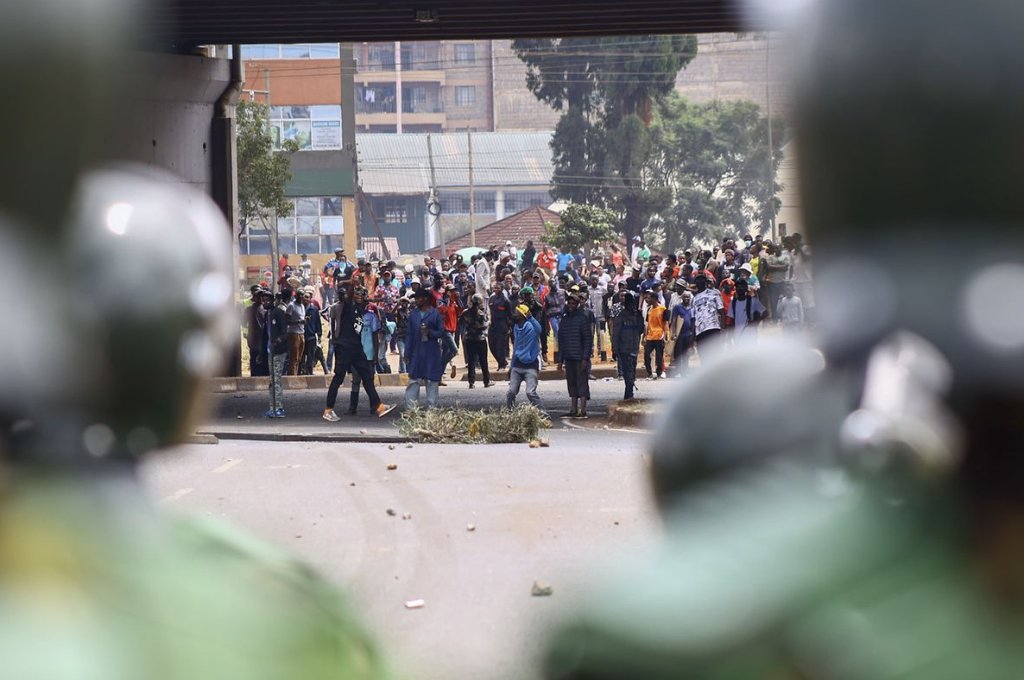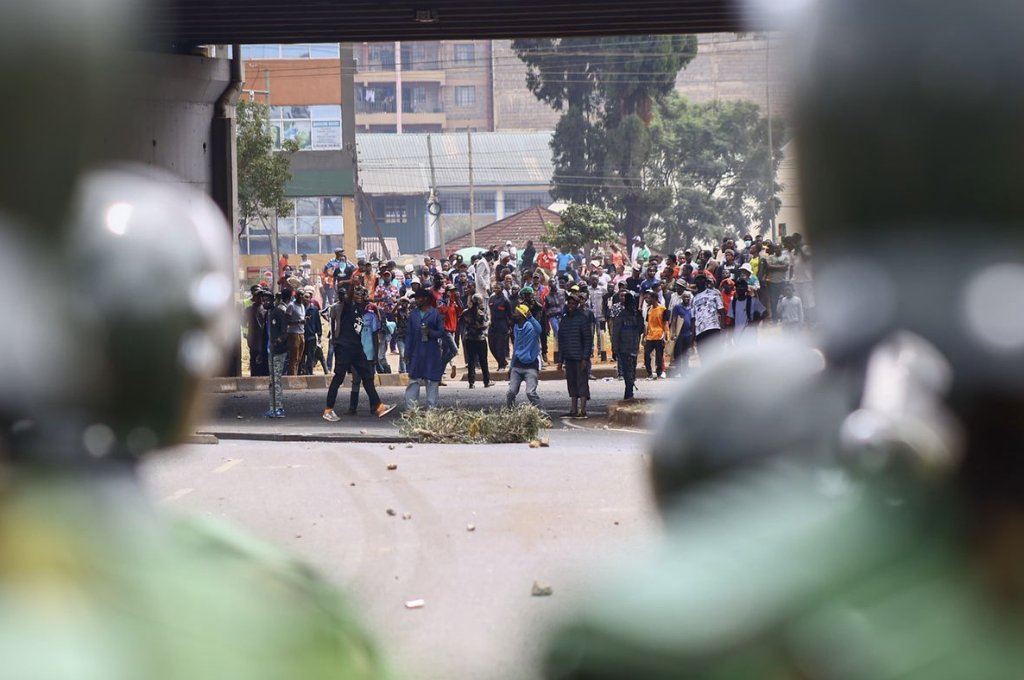Mass Protests Turn Deadly: 9 Killed, 400 Injured Nationwide
Summary of Protests in 27 Counties Resulting in Tragedy
On June 25, 2025, a significant wave of protests erupted across 27 counties, leading to tragic consequences, including the loss of nine lives and injuries to over 400 individuals. The situation has garnered nationwide attention, with news outlets and social media platforms buzzing with updates and reactions.
Background of the Protests
The protests were sparked by a variety of socio-political issues that have been brewing for some time. Citizens expressed their frustrations over government policies, economic hardships, and perceived injustices. In recent years, Kenyans have faced increasing challenges, including rising costs of living, unemployment, and inadequate public services. These grievances culminated in widespread demonstrations as citizens sought to voice their concerns and demand accountability from their leaders.
The Scale of the Protests
The protests were not confined to a single area but spread across a vast number of counties, indicating a collective discontent among the populace. The scale of participation was unprecedented, with thousands of citizens taking to the streets, waving banners and chanting slogans calling for change. The demonstrations reflected a growing sentiment that citizens were no longer willing to accept the status quo and were prepared to stand up for their rights.
Incidents of violence
Unfortunately, the protests turned violent in several regions, leading to confrontations between demonstrators and law enforcement. Reports indicate that clashes occurred as police attempted to disperse crowds, resulting in chaos and panic. Eyewitness accounts detail scenes of violence, with some protestors engaging in confrontational behavior, which escalated tensions and led to tragic outcomes.
- YOU MAY ALSO LIKE TO WATCH THIS TRENDING STORY ON YOUTUBE. Waverly Hills Hospital's Horror Story: The Most Haunted Room 502
Casualties and Injuries
The protests resulted in nine confirmed fatalities and injuries to over 400 people. The injured included both protestors and law enforcement officers, highlighting the chaotic nature of the events. Hospitals across the affected regions were overwhelmed with casualties, and emergency services worked tirelessly to provide medical assistance. The loss of life has sparked outrage among citizens and intensified calls for government accountability.
Government Response
In the wake of the protests, government officials have issued statements expressing condolences to the families of those who lost their lives. However, many citizens feel that the responses have been inadequate and lack sincerity. There are growing demands for a thorough investigation into the violence and for accountability for those responsible for the tragic outcomes of the protests.
Social Media and Public Reaction
The protests and the subsequent violence have been widely covered on social media platforms, with hashtags trending as citizens share their experiences and opinions. Videos and images of the protests, including the aftermath of violence, have circulated widely, drawing international attention. Public reaction has been polarized, with some supporting the right to protest and others criticizing the violence that ensued.
Call for Change
As the dust settles on the protests, a clear message emerges from the chaos: citizens are calling for significant change. Many are advocating for reforms in governance, better economic policies, and improved public services. The protests have served as a wake-up call for leaders, emphasizing the need to address the underlying issues that have led to widespread discontent.
Conclusion
The tragic events of June 25, 2025, stand as a stark reminder of the power of collective action and the urgent need for dialogue between citizens and their leaders. As the nation grapples with the aftermath of the protests, it is essential for the government to listen to the voices of its people and take meaningful steps toward addressing their concerns. The road ahead may be challenging, but it is clear that Kenyans are determined to pursue justice and demand accountability for their future.

Live blog: Nine people killed, 400 injured as 27 counties protesthttps://t.co/EPwm6o5wsZ pic.twitter.com/45yNzCHWWW
— NTV Kenya (@ntvkenya) June 25, 2025
Live blog: Nine people killed, 400 injured as 27 counties protest
The recent events across multiple counties in Kenya have left the nation in shock and mourning. A live blog shared by NTV Kenya detailed the harrowing outcomes of protests that erupted, resulting in the tragic loss of nine lives and injuries sustained by over 400 individuals. This situation is a grim reminder of the power of civil unrest and the deep-seated issues that can lead to such violent confrontations.
The protests, which spanned across 27 counties, were ignited by a myriad of factors, including political dissatisfaction, economic struggles, and social injustices. As communities rallied together to voice their grievances, the atmosphere quickly escalated, leading to clashes with law enforcement and a chaotic scene that left many caught in the crossfire.
Understanding the Protests: What Sparked the Unrest?
To truly grasp the weight of these protests, it’s essential to explore the underlying issues that fueled such widespread discontent. Many protesters were driven by frustrations regarding high living costs, unemployment rates, and perceived government corruption. The economic hardships faced by ordinary Kenyans have been exacerbated by a series of policy decisions that have left many feeling marginalized and unheard.
These protests are not isolated incidents; they reflect a growing trend within the country where citizens feel compelled to take to the streets to demand change. As reported by various news outlets, including NTV Kenya, this uprising was not merely a spontaneous event but rather a culmination of long-standing grievances that had reached a boiling point.
The Impact of Violence on Protesters and Law Enforcement
With protests often come confrontations between demonstrators and law enforcement. The recent events tragically illustrate this reality. As tensions escalated, law enforcement responded to the chaos, leading to a tragic outcome where lives were lost. Eyewitness accounts from the scene reveal the harrowing experiences of those involved, emphasizing the urgent need for dialogue and resolution in the face of such violence.
The injuries reported, totaling over 400, highlight the physical toll that civil unrest can take. Many individuals were caught in the midst of the chaos, facing rubber bullets, tear gas, and other forms of confrontation from law enforcement. This not only impacts the individuals directly involved but also reverberates throughout communities, instilling fear and distrust in those who witness or hear about the events.
The Role of Social Media in Documenting the Protests
In today’s digital age, social media plays a crucial role in shaping public perception and awareness of events like these protests. Platforms like Twitter have become vital for sharing real-time updates and images, as illustrated by NTV Kenya’s live blog. This instant access to information allows for greater transparency but also raises concerns about misinformation and the potential for inciting further unrest.
As videos and images circulate, they can serve as both a rallying cry for change or a tool for spreading fear. The emotional weight of seeing images of violence and suffering can galvanize communities to act, but it can also lead to increased polarization and division. Thus, the impact of social media in these instances cannot be understated; it has the power to influence narratives and shape public opinion dramatically.
Community Response and Support Initiatives
In the aftermath of such tragedies, it’s essential to highlight the community response and support initiatives that often emerge. Local organizations and citizens frequently rally to provide aid to those affected, whether through medical assistance, counseling, or basic necessities.
Support networks can play a crucial role in healing communities torn apart by violence. Initiatives that focus on conflict resolution, dialogue, and understanding can help bridge divides and foster a sense of unity among people who may feel pitted against each other.
Furthermore, these programs can provide an avenue for citizens to express their grievances in a constructive manner, rather than resorting to violence. Engaging community leaders and stakeholders in discussions can pave the way for positive change and a more peaceful coexistence.
Looking Ahead: The Path to Resolution
As we reflect on the events that unfolded during these protests, it’s crucial to consider the path forward. The loss of life and the injuries sustained call for urgent dialogue among government officials, community leaders, and citizens. Addressing the root causes of the unrest is a complex yet necessary undertaking.
Implementing policies that tackle economic disparities, promote transparency in governance, and prioritize the needs of marginalized communities can help mitigate the conditions that led to the protests. Additionally, fostering an environment where citizens feel safe to voice their concerns without fear of violence is essential for building a healthier democracy.
Engaging in community dialogues can also be a productive way to bridge the gap between citizens and government officials. Creating platforms where people can share their experiences and grievances can help build trust and understanding, paving the way for lasting change.
Conclusion: The Importance of Listening and Understanding
The protests that led to the tragic loss of lives and injuries are a stark reminder of the importance of listening to the voices of the people. It’s essential for those in power to recognize the frustrations and challenges faced by ordinary citizens. By fostering open communication and taking actionable steps toward addressing these issues, we can work towards a more peaceful and equitable society.
The events of the past few days will undoubtedly leave a lasting impact on the affected communities and the nation as a whole. It is our collective responsibility to ensure that such tragedies do not happen again. Through empathy, understanding, and concerted efforts towards positive change, we can strive to create a future where every voice is heard and valued.
As we navigate through these turbulent times, staying informed and engaged with community efforts can make a difference. Let’s remember the importance of compassion and solidarity in the face of adversity, as we work together to heal and rebuild.

